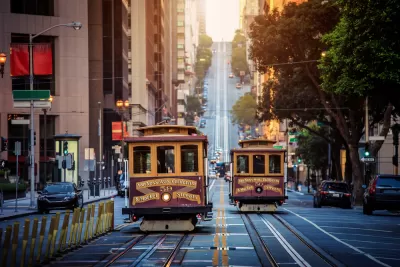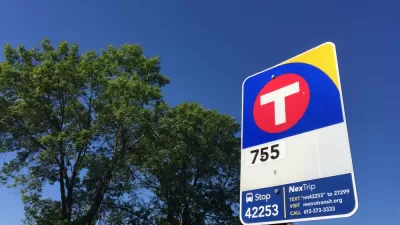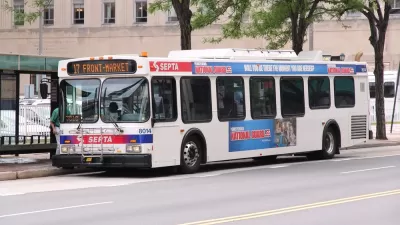The author of ‘The Great American Transit Disaster’ explains how U.S. transit agencies got to the existential crisis they face today.

In an interview in Bloomberg CityLab, David Zipper speaks with author Nicholas Dagen Bloom about his new book, The Great American Transit Disaster, in which Dagen Bloom describes how “US public transportation has lurched from one crisis to the next throughout the past century.”
Zipper writes, “Focusing on the histories of Atlanta, Baltimore, Boston, Chicago, Detroit and San Francisco, Bloom rejects the idea that there was anything preordained about the descent of private transit operators into bankruptcy or the decline in service offered by the public agencies that have operated buses and trains ever since.”
As Zipper notes, “It’s mind-blowing to consider just how good transit service once was.” In the early 20th century, transit was, Dagen Bloom adds, “a very profitable business,” but not for the reasons we might think. “The big money was always in the land development. Once the transit lines were built, the land was basically developed around them.”
While the rise of automobiles did have an impact on transit ridership, Dagen Bloom believes that “there was a whole series of compounding decisions made by city leaders, state leaders and private sector people” that led to the decline of transit systems. “You didn’t have to build systems of parkways and highways that were so comprehensive that you sacrifice neighborhoods. You didn’t have to completely demolish your downtowns, create massive federal programs that paid for parking ramps and give tax breaks on downtown parking.”
Ultimately, Dagen Bloom concludes, to save American transit, “someone’s got to fund transit” to pull agencies out of their current death spiral.
FULL STORY: Anatomy of an ‘American Transit Disaster’

Study: Maui’s Plan to Convert Vacation Rentals to Long-Term Housing Could Cause Nearly $1 Billion Economic Loss
The plan would reduce visitor accommodation by 25,% resulting in 1,900 jobs lost.

North Texas Transit Leaders Tout Benefits of TOD for Growing Region
At a summit focused on transit-oriented development, policymakers discussed how North Texas’ expanded light rail system can serve as a tool for economic growth.

Why Should We Subsidize Public Transportation?
Many public transit agencies face financial stress due to rising costs, declining fare revenue, and declining subsidies. Transit advocates must provide a strong business case for increasing public transit funding.

How to Make US Trains Faster
Changes to boarding platforms and a switch to electric trains could improve U.S. passenger rail service without the added cost of high-speed rail.

Columbia’s Revitalized ‘Loop’ Is a Hub for Local Entrepreneurs
A focus on small businesses is helping a commercial corridor in Columbia, Missouri thrive.

Invasive Insect Threatens Minnesota’s Ash Forests
The Emerald Ash Borer is a rapidly spreading invasive pest threatening Minnesota’s ash trees, and homeowners are encouraged to plant diverse replacement species, avoid moving ash firewood, and monitor for signs of infestation.
Urban Design for Planners 1: Software Tools
This six-course series explores essential urban design concepts using open source software and equips planners with the tools they need to participate fully in the urban design process.
Planning for Universal Design
Learn the tools for implementing Universal Design in planning regulations.
Ascent Environmental
Borough of Carlisle
Institute for Housing and Urban Development Studies (IHS)
City of Grandview
Harvard GSD Executive Education
Toledo-Lucas County Plan Commissions
Salt Lake City
NYU Wagner Graduate School of Public Service





























